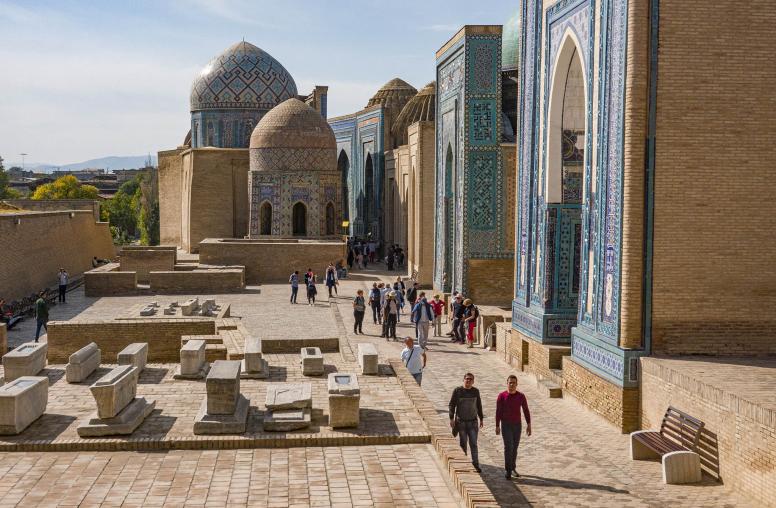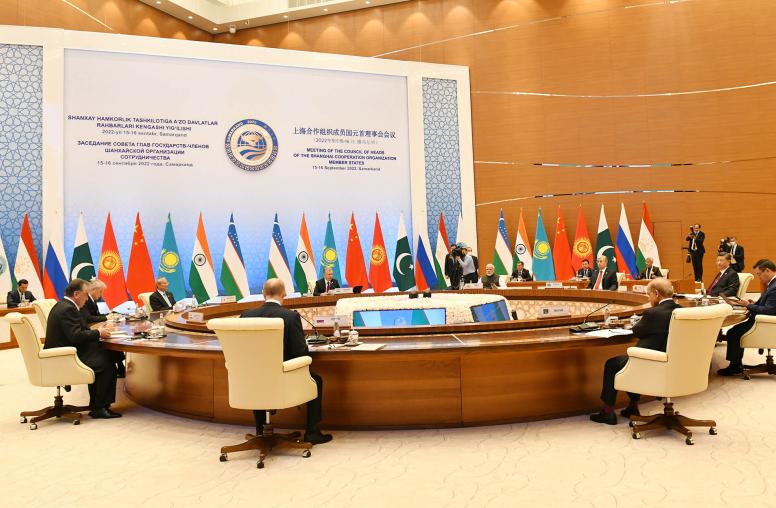Beginning in January of this year, Kazakhstan began repatriating its citizens from Syria on dedicated mass flights in what it calls “Operation Zhusan.” Zhusan literally means sagebrush, but significantly, it evokes the unique scent of the Kazakh steppe—something along the lines of “the green, green grass of home.” Within months, Tajikistan and Uzbekistan followed suit, and Kyrgyzstan is expected to soon begin facilitating the exodus of its citizens who were involved with the Islamic State.

This puts the countries of Central Asia in the forefront of nations in moving to bring their people home after the extremist group’s territorial collapse. It also represents a huge shift in attitude since the military defeat of ISIS. Until recently, the region’s governments relied on harsh laws and criminal punishment for those supporting, or suspected of supporting, ISIS. As one government official involved in the flights said recently, “We never expected any of them to ever come back alive.”
Central Asia, with a population of some 72 million, provided roughly the same number of foreign fighters for ISIS as Western Europe, with its population of some 400 million. As a region, it is facing the challenge of rehabilitation and reintegration in part of former fighters but especially of women, youth, and children. Kazakhstan flew out 516 from Syria, Tajikistan started with 84 children from Iraq at the end of April, and Uzbekistan’s first flight of 156, mostly women and children, arrived in Tashkent on May 30.
Now the countries of Central Asia must develop policies that balance security and justice with reconciliation and rehabilitation of their citizens. The families, communities, and professionals that will receive these returnees must be made ready to confront the long-term physical, psychological, emotional, and material needs they bring with them. The danger of a failed reintegration effort on any of these fronts risks re-radicalization, transition to other forms of criminal and violent behavior, and the exposure of new parts of the population to violent ideologies.
Risks of Repatriation
The international community has just begun to address the complexity and critical risks involved in repatriating ISIS-linked individuals and children. To help develop a coherent response for Central Asia, government officials, caregivers, NGOs, and media from Kazakhstan, Uzbekistan, Tajikistan, and Kyrgyzstan came together in July in Bishkek, Kyrgyzstan. Many of the participants have worked with families and children returning from the conflict zones of Iraq and Syria.
The two-day regional conference, convened by the U.S. Institute of Peace, along with Search for Common Ground and the Kyrgyz State Commission on Religious Affairs, was designed to create a platform for policy makers, the expert community, academia, and civil society members to:
- Discuss and share the experience so far, the policy priorities and approaches of the region’s states on rehabilitation and reintegration.
- Present international best practices on rehabilitation and reintegration of returnees and how to prepare families and communities to meet their long-term needs.
- Talk about how media can cover and facilitate the reintegration.
While it’s too early to say different “models” of reintegration have taken hold, thought-provoking differences emerged at the conference in how Central Asian states are grappling with the returnee problem.
Kazakhstan, with more time and three flights already completed, has dedicated resources to systemize the process with a professional staff and established a rehabilitation complex on the site of an old Soviet-era Young Pioneer Summer camp on the Caspian Sea. The emphasis is on both the physical needs and the ideological reeducation of the returnees.
Uzbekistan has given a greater role to the informal, traditional institutions of the mahalla (local self-governing neighborhood communities), of the family, as well as local civil society organizations.
Tajikistan, with a history of national reconciliation after a civil war fought over ideology and religion in the 1990s, emphasized less ideological conversion and more how to facilitate what one participant called a “return to normal life.” This question of the balance between deradicalization through ideological engagement and disengagement through facilitating a return to normal life was, and will likely continue to be, a major subject of conversation in this process.
Long-Term Trauma
One area in which all four countries are looking to the international community for insight is dealing with the long-term post-trauma issues. Along with material needs, the home countries will have to address the impact on adults, and especially children, of having lived under the harsh conditions imposed by the Islamic State and experiencing the especially brutal war that brought it down.
USIP brought to the conference a team led by Dr. James Gordon from the Center for Mind-Body Medicine (CMBM) to discuss the science behind its approach and to demonstrate some of the techniques it has developed.
CMBM, a Washington-based nonprofit, delivers programs for alleviating population-wide psychological trauma and boosting resiliency. It has implemented such programs with conflict-affected populations in Kosovo, Gaza, and Israel; with Syrian refugees in Jordan; and with U.S. veteran communities, as well as with survivors of natural disasters in the United States. Going forward, USIP hopes to teach these post-trauma methods to the school teachers, social workers, clergy, and others who work in the Central Asian communities where returnees are trying to reintegrate.
The media’s role in shaping how the public will understand the returnees was another major topic at the Bishkek conference, including the possibility they could be alternately portrayed as helpless victims or stigmatized as “terrorists.” The role of returnees as credible voices with first-hand knowledge of extremism was recognized as a potentially powerful contribution to preventing future radicalization. Participants agreed that putting a human face on returnees in telling the stories of their journeys—both the good and the bad—would facilitate their successful reintegration into society.
A concern, however, is that special treatment for returnees may anger—or confuse—those who are struggling at home and didn’t go to Syria or Iraq.
One participant from Tajikistan made a telling observation: After years of hearing horror stories of radicalization and violent extremism in the official media, people will now hear the same media tell humanizing, positive stories when those same people come back.
The challenges are clear enough. But Central Asia, not always known as a particularly innovative part of the world, is leading the way on the repatriation of its citizens after the fall of the Islamic State. The example set by the region’s governments can show Europe, America, and other Asian countries what may work as they struggle with the return of their own citizens who, in varying ways, fell in with the Islamic State.



